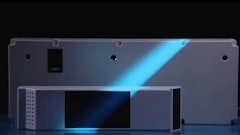The hype says RFID (radio frequency identification) tags will replace barcodes. Don't believe it. RFID might augment, complement and layer over barcode applications. RFID will definitely fill some niches better than barcodes, but it will not make barcodes go away.
A lot of misinformation has gotten out to the contrary. AutoID Center shares some of the blame. When they launched EPC RFID in 2003, they clearly positioned it as the successor to barcodes, over time replacing them entirely.
Did AutoID Center really think EPC would make barcodes go away, or was it just a ploy to get attention and feed the hype? That may be a hard question to answer, but one thing is now clear. Both barcodes and RFID will exist into perpetuity, or at least into the foreseeable future, because both barcode and RFID deliver the benefits of automated data capture. They also complement each other quite well. Look at some of the facts:
Even in technology, history repeats itself. Back in the 1970s and 1980s when barcodes emerged, they were pitched as a replacement for human readable text. We were told that barcodes would get rid of text and the errors and mistakes related to manual inputs. Over time, barcodes did get rid of errors. In some places text and manual inputs did go away, but human readable text didn't go away altogether. Instead, it got used in ways that complemented barcodes. On any shipping label standard in use today, there are almost always barcodes but there is always text. Text is there because sometimes a human being has to read the label. Exceptions happen, systems fail and the fallback is the human readable text.
The same relationship exists between barcodes and RFID. RFID has the upside of non line--of--sight, but barcodes fill the gaps and act as the fallback. Distributors, operators and retailers will want both barcode and RFID. Some replacement of barcodes will take place where RFID is a better fit, but layering of the two technologies will also occur. That is happening today with smart labels–barcodes on the front and an RFID tag on the back. That layering will result in richer, more productive data capture applications, and that will bring users closer to a truly seamless flow of product and information.
The hype around RFID does have a purpose. It helps create the energy needed to get at the benefits inherent in RFID. Even barcode bashing helps create energy for RFID. Just don't count barcodes out. How we use them may change, but they will be part of the solution for a long time.















